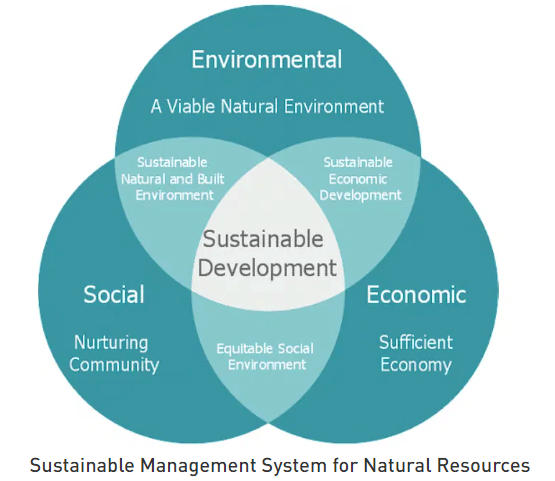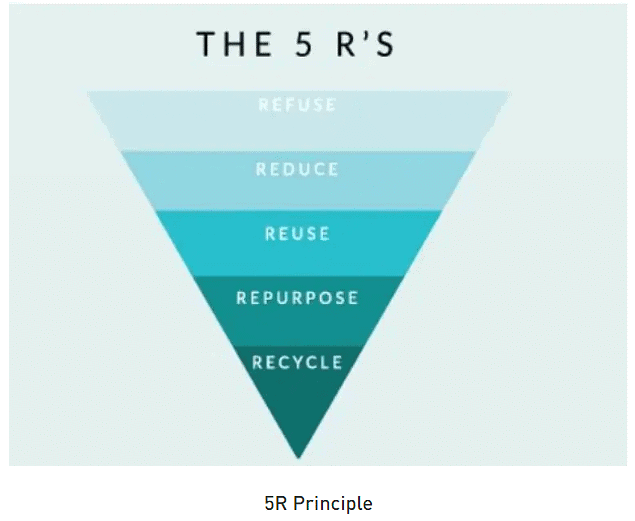Natural resources, their sustainable management and conservation | Agriculture Optional Notes for UPSC PDF Download
| Table of contents |

|
| Introduction |

|
| Natural Resources and its Types |

|
| Sustainable Management System |

|
| Water Conservation |

|
| Mineral Conservation |

|
| Environmental Preservation |

|
Introduction
"Sustainability" is the concept aimed at preserving and safeguarding the environment and the natural world. Within our environment, natural resources are of vital importance to human existence. These resources naturally occur on Earth, but human actions are jeopardizing them, leading to depletion or even extinction. The primary goal of biological sustainability is to establish a harmonious equilibrium between nature and these invaluable natural resources.
Natural Resources and its Types
Natural resources are those resources that exist on Earth independently, without human intervention. They play a vital role in the cycle of life, supporting the survival of humans and animals. These resources can be broadly categorized into two main types: renewable and non-renewable resources.
Renewable Resources
Renewable resources, as the name suggests, can be obtained after use and are naturally replenished by the environment. They are available in abundance, with a lower risk of depletion, and typically have a higher recovery rate. Examples of renewable resources include sunlight, soil, water, and air.
Non-Renewable Resources
Non-renewable resources, on the other hand, cannot be replenished after reaching their maximum limit of use. These resources are found in limited quantities and are at a higher risk of depletion. The recovery rate for non-renewable resources is typically slow. Examples of non-renewable resources include fossil fuels, gold, minerals, coal, and petroleum.

Sustainable Management System
A Sustainable Management System is a framework designed to establish a harmonious balance between the needs of humanity and the preservation of the natural environment. It offers strategies, plans, and a structured approach to safeguard our natural resources.

Need to Manage Natural Resources
- Humans rely on nature for their survival, obtaining essential resources such as air, water, food, clothing, and sunlight from the environment.
- The presence of natural resources like air, water, sunlight, and food is crucial for the existence of all living beings on Earth. Without these resources, survival would be impossible.
- Managing natural resources is an absolute necessity due to the vital role they play in supporting life on our planet.
- Additionally, the global population is steadily increasing, leading to a rise in the consumption of natural resources. If we don't utilize these resources with care, they will be exhausted rapidly.
- Failing to conserve natural resources would mean that future generations will have limited or no access to these essential elements.
- Conservation of natural resources is imperative to strike a balance between the needs of humanity and the preservation of the environment.
- Natural resources like coal, petroleum, and minerals serve as the primary sources of energy and power. If we continue to exploit these resources without restraint, we risk facing a significant energy shortage in the near future.
Ways to Save Natural Resources
To protect and conserve our natural resources, the 5R's approach is widely accepted at a global level.
These five principles guide our efforts to safeguard the environment:
- Reuse: Reusing products is more eco-friendly than recycling, as it requires no additional energy. For instance, opting for reusable steel cutlery over single-use plastics can significantly reduce waste.
- Reduce: We must use natural resources judiciously, avoiding waste whenever possible. Simple actions like turning off lights and electrical devices when not in use or minimizing water waste can have a substantial impact.
- Recycle: Recycling products provides them with a new lease of life and reduces the pressure on landfills and waste released into the sea. Items like single-use plastic bottles and empty cans should be recycled.
- Refuse: Say no to items that are harmful to the environment. Avoiding the use of plastic carry bags, for instance, can help reduce plastic pollution.
- Repurpose: When products can no longer be used for their original purpose, repurposing them for other uses is an effective way to extend their lifespan. For example, old plastic bottles can be transformed into planters for a kitchen garden.
Water Conservation
Water is a vital natural resource essential for all living beings. However, with industrialization, water pollution is on the rise, and potable water is becoming scarcer in some regions.
To ensure the equitable distribution of water resources, several methods are employed:
- Large Canals: These structures transport water to rural areas, improving irrigation systems. For example, Kulhs in Himachal Pradesh have greatly benefitted from large canals.
- Dams: Dams store substantial volumes of water for both irrigation and electricity generation, meeting the demands of agriculture and household energy consumption.
- Rainwater Harvesting: This method involves collecting and holding surface water while replenishing groundwater. It helps maintain the water table and provides moisture to farming fields.
Mineral Conservation
Coal and petroleum are both critical energy sources, and with the industrial revolution, the demand for energy has been steadily rising. These reserves of coal and petroleum, however, are finite in quantity. If we continue to consume them at current rates, they will become exhausted in the near future.
To address this issue, it's essential to fully exploit alternative, renewable, and environmentally friendly energy sources to meet the increasing energy demands. By doing so, we can reduce the pressure on these non-renewable resources, allowing them to last for an extended period. Renewable energy sources like solar energy, wind energy, hydroelectric power, tidal energy, and others should replace fossil fuels.
Environmental Preservation
Forests offer a wide range of resources such as timber, wood, food, and medicines, while also serving as the natural habitat and refuge for various wildlife species. Ongoing deforestation and illegal hunting have led to the exploitation and endangerment of forests and numerous animal species. Therefore, it is crucial to protect and conserve both forests and wildlife.
To achieve this, the government and other concerned parties are designating specific regions as national parks, wildlife sanctuaries, ecologically sensitive areas, and Ramsar sites in order to safeguard the natural habitats of wildlife.
Key Points to Keep in Mind
- Natural resources are resources that exist on Earth without any involvement from humans.
- Renewable resources are swiftly regenerated by natural processes.
- Non-renewable resources are replenished by nature at a much slower rate.
- The burning of coal and petroleum is leading to elevated temperatures, resulting in global warming.
- Biodiversity encompasses a wide range of animals, plants, and living organisms within ecosystems.

|
Explore Courses for UPSC exam
|

|

















